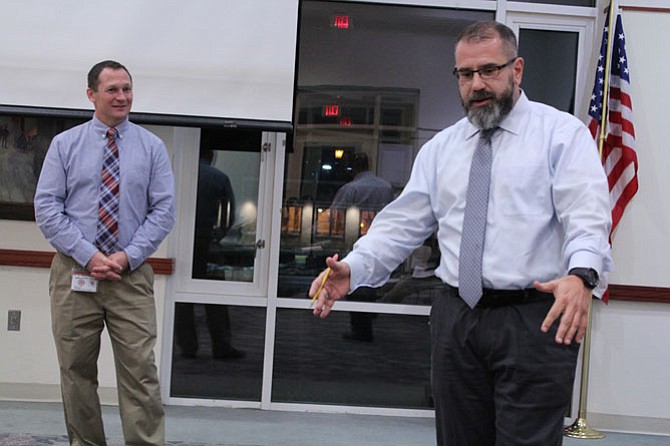Fairfax County Health Department Division of Environmental Health employees Adrian Joye (left), environmental health program manager, and Pieter Sheehan (right), director, explain to the Great Falls Citizens Association how property owners must be educated about the difference between a sewer and septic system. Photo by Fallon Forbush.
Great Falls — Up to 167 homeowners in Great Falls are on the hook for following a Fairfax County Health Department regulation when it comes to monitoring their septic systems, but many are unaware.
“At some point, [every septic system is] going to fail and collapse and you’re going to have a problem,” Adrian Joye, environmental health program manager for the agency’s Division of Environmental Health, said during a Great Falls Citizens Association meeting on Monday, Jan. 9, in the Great Falls Library.
According to him, as part of the state’s alternative onsite sewage systems regulation that took effect in 2011, all homeowners with alternative septic systems must have them inspected once a year.
And not just any vendor can conduct the inspection. It must be completed by a Department of Professional Occupational Regulation approved Alternative Onsite Sewage System Operator, says Joye.
THOSE WHO FAIL to do so can be fined for each day their system is not in compliance. The first offense is $50 and the second offense is $100. Although each day constitutes a separate offense, the agency can only assess a charge once every 10 days, up to a maximum of $3,000, Joye says.
